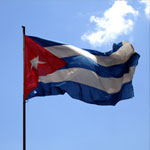There were no surprises in Cuba on February 24 when the National Assembly of People’s Power decided that Raúl Castro, brother of Fidel, will be the country’s new president. It is a post Raúl has occupied on an interim basis for the last 19 months, ever since Fidel had to cede power to him because of health reasons. Experts agree that this change in leadership will not lead to a broader political opening. Nevertheless, most believe that to one degree or another, it will usher in a period of economic reform that reduces the scarcities felt on every level in the island. The biggest optimists even think that this could happen earlier than most people expect. Who is Raúl Castro? Where is he taking Cuba?

Sign up to stay informed about our latest article releases.